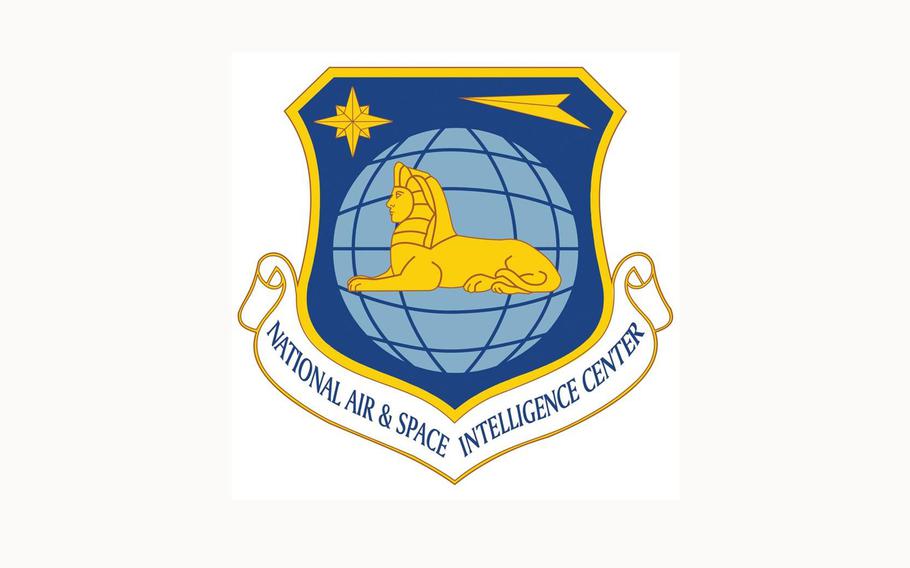
(Facebook/NASIC)
(Tribune News Service) — The National Space Intelligence Center (NSIC) at Wright-Patterson Air Force Base welcomed not only a new commander but broader responsibilities Friday as the center shifted to a field operating agency under the Space Operations for Intelligence.
That means the center is now focused not simply on space intelligence but wider national intelligence, helping to produce data that will go toward future weapons and satellites.
It may also mean more personnel at Wright-Patterson.
A substantial chunk of the U.S. Space Force’s intelligence apparatus is anchored at Wright-Patterson, observed Space Force Maj. Gen. Gregory Gagnon, deputy chief of space operations for intelligence.
Fundamentally, intelligence is meant to “warn and inform,” Gagnon said during a ceremony at the National Museum of the U.S. Air Force.
“That warning in space starts here,” the two-star general said. “It starts in Dayton.”
The NSIC saluted Col. Marcus D. Starks as its new commander in the center’s first change of command ceremony.
The ceremony saw the NSIC guidon, or banner, handed off from NSIC’s first commander, Col. Marqus Randall, to Lt. Gen. David Miller, commander of Space Operations Command.
Then the guidon shifted to Gagnon, and from Gagnon to Starks.
The transition of NSIC to a field operating agency broadens the center’s customer base, allowing it to meet responsibilities to both national and Space Force intelligence efforts.
The role of the Space Force and the NSIC in safeguarding the satellite network that makes possible travel and commerce — not just military operations — cannot be discounted, NSIC advocates say.
“Space Intelligence today is not just military intelligence,” Gagnon said. “It is national intelligence.”
“Our work to secure a FOA (field operating agency) for NSIC under Gen. Gagnon helps secure NSIC’s growing importance. The realignment will bring a need for more mission capacity and personnel to Wright-Patterson Air Force Base,” U.S. Rep. Mike Turner, R-Dayton, a senior member of the House Armed Services Committee, said in a statement Friday.
Randall first took command of NSIC in a ceremony at Wright State University’s Ervin J. Nutter Center in June 2022. In that same ceremony, the NSIC was born, focused on gathering intelligence on what adversaries are doing in space, an arena increasingly important to American military readiness and the U.S. economy.
Wright-Patterson-anchored NSIC or “Delta 18″ is considered the 18th member of the nation’s intelligence community.
In farewell remarks, Randall thanked his team for producing intelligence “that has found its way to the desk of the president multiple times.”
And Starks — a U.S. Naval Academy graduate who spent 28 years in the Navy before moving to Space Force — sought to prepare his squadrons for the work ahead.
“We will work to ensure the domain’s (space’s) safety, stability and security,” Starks said.
The joint force — military language for every military branch, active-duty and Reserve — is ever reliant on space, he also said.
“It doesn’t take a master’s degree to realize that everything we do now is linked to space,” Starks said.
The shift to new responsibilities for NSIC has been in the works for some time.
In fiscal year 2023 intelligence and defense legislation, Turner, who chairs the House Permanent Select Committee on Intelligence, crafted language that aimed at gauging the effectiveness of the center’s organizational and command structure.
Talks with appropriators in both the House and Senate proved successful in permitting the establishment of NSIC’s new status, Turner’s office said.
(c)2024 the Dayton Daily News (Dayton, Ohio)
Visit the Dayton Daily News
Distributed by Tribune Content Agency, LLC.